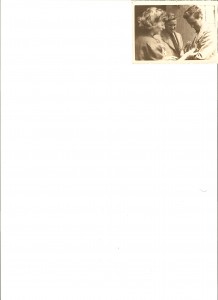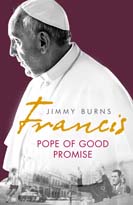Did Philby murder journalists ? by Jimmy Burns
The just published UK paperback edition of my latest book Papa Spy, subtitled A True Story of Love, Wartime Espionage in Madrid, and the Treachery of the Cambridge Spies will I hope provoke a fresh examination of Kim Philby’s alleged involvement in the murder of English and American journalists, ahead of the publication of an authorised and carefully vetted official history of MI6.
My unauthorised book exposes for the first time the bitter and protracted personal battle to influence British policy towards Spain in WW2 between Philby, the head of MI6’s Iberian section, and my father, Tom Burns, a pro-Francoist English catholic who helped run propaganda and secret operations in the cover post of press attaché in the British embassy in Madrid.
Both men had first crossed paths during the Spanish Civil War, when Burns, then a young Catholic publisher, and friend of Evelyn Waugh and Graham Greene, had volunteered to drive an ambulance for the Nationalist side, while Philby was posted to Spain as a Times correspondent with the Francoist forces, a job he used as cover for his work as a Soviet agent.
Personal rivalry as well as ideological differences affected the relations between both men with Burns and Philby competing at one point for the affections of Lady Lindsay Hogg, the glamorous stage actress more popularly known known as Francis ‘Bunny’ Noble. (Noble is pictured in the above photograph with Philby, who is standing in the middle, and an unknown third party in Madrid circa 1941).
It was during the Civil War –on New Year’s Eve 1937- that Philby left Zaragoza by convoy to cover Franco’s bold counter-attack to relieve a besieged garrison near the town of Teruel. Philby travelled in the back seat of a two-door saloon, accompanied by the Englishman Dick Sheepshanks of Reuters, and two Americans, Ed Neil of Associated Press and Bradish Johnson, a freelance photographer who was on assignment for Newsweek.
According to an account which Philby later filed for The Times, the car was hit by an artillery shell in the small village of Caude. He was the only survivor of the four journalists who travelled together. Johnson died instantly. Sheepshanks died later that evening while Neil died of gangrene two days later.
But I understand the historian Professor Hugh Thomas is among those who has been taking a special interest in probing a different version to explain how Philby miraculously escaped with minor injuries despite sharing the back seat of a two-door car. This has Philby getting out of the car before lobbing a grenade at his colleagues. Philby’s motivation was fear that one of the journalists, Sheepshanks, was beginning to become suspicious of him and was about to blow his cover.
Sheepshanks was a debonair old Etonian who had studied Cambridge just as Philby had done, although they were not exact contemporaries. The Reuters man was at the time a boyfriend of Jeanne Camoys Stonor, a Catholic aristocrat.
In a memoir published two years ago, Jean’ surviving daughter Julia wrote that Sheepshanks and the two other journalists had been assassinated by Philby, a claim she subsequentlymade to me in a conversation, but which she was unable to substantiate with any documentary evidence since most MI6 files remain classified.
The allegation against Philby however is thought to have first been made in the aftermath of the incident by an unnamed foreign office official who was a friend of the Sheepchanks family although it never resulted in any action being taken, and a cover-up was suspected.
The unresolved questions over why the three journalists had died were lost in the fog of a Civil War that continued till 1939.By the time WW2 broke out, Philby was well on his way to infiltrating himself into the higher echelons of British intelligence, a position from which he escaped scrutiny and final exposure as a Soviet spy until 1963 then he fled to Moscow, never to return.
The new authorised history of MI6 by Professor Keith Jeffery of Queen’s University, based on thousands of secret papers, is due to be published by Bloomsbury in September. Jeffery had had unique access to MI6 documentary material that has remained classified for decades. Expectations that it will provide a definitive Philby story have been dashed with news that the ‘history’ will cover only the first fifty years of the spy organisation’s existence, and go no further than 1949.
Post-script: Have received an interesting email in response to this from an academic friend who is not unfamiliar with the history of secret intelligence suggesting that neither MI6 not MI5 will ever enlighten us on this.He writes: ” Could anyone have foreseen the rise and rise of Philby in the late 1930s? He was just another young journalist on the make. Its a good story, and…one that will never die.”
But then again plausible deniability has been part of the spy world for decades.


Comments